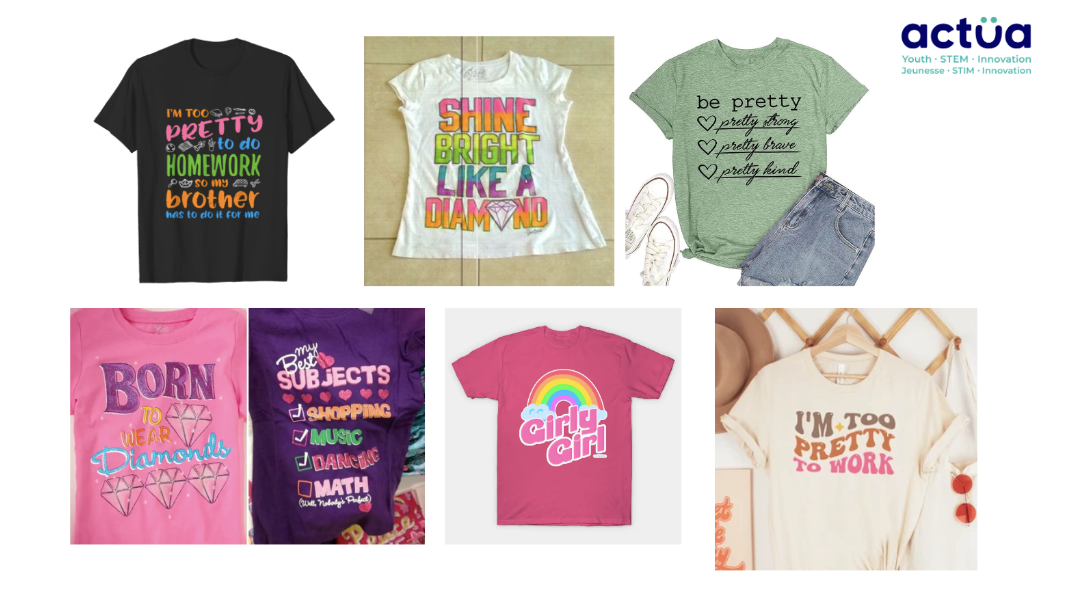3. Unconscious Bias
Unconscious Bias
What is 'Unconscious Bias'?
The first step in working to change this context is to understand how we got here. What drives inequality between genders in the field of STEM? Everyone has biases; it is part of being human. Unconscious (sometimes referred to as implicit) bias is attitudes, stereotypes and beliefs that can affect how we treat others.
Let’s take a moment to explore this concept further and understand how it can affect our decision-making with the following video. Let’s explore the following video to delve into this phenomenon.
Watch: How Did Tech Become So Male-Dominated? (4:13)
As you noticed in the video, much of what has driven the inequality experienced by women in tech comes from assumptions and stereotypes about gender. These are the societal expectations of what women can and should do. These assumptions are what is referred to as bias. While not necessarily intentional (and most often not intentional), unconscious bias impacts how we judge others based on factors such as race, ability, gender, culture, language, etc. Our bias can lead us to have preferences for, or prejudices against, certain individuals or groups. Our unconscious (or implicit) biases often come out when we must make quick decisions under stress, and we may end up relying on unconscious stereotypes. Our unconscious biases become harmful when they affect our actions and decisions, which is almost always happening at a deep level we are not consciously aware of. This is why examining, challenging, and unlearning what we know is so important.
The Role of Unconscious Bias in Gender Inequality
Gender bias then, is the stereotypical attitudes or prejudices that we have towards specific genders. This bias is taught through our social groups and institutions, reinforced through media and become internalized by people of all genders. Think back to our first image, the Google Image search of “great scientists”. Now consider further the image below. These are images from Google Search depicting Science and Math shirts for girls, and they are quite problematic.

What does it communicate about gender bias when it comes to women and girls and STEM? What does it say to trans youth? What attitudes and beliefs may folks have about themselves when they are bombarded with these kinds of images? What does this teach young people and adults about the place of trans folks, girls, and women in STEM?
These messages actively discourage girls from seeing themselves in STEM from a very young age. And they are powerful. Research shows that girls as young as 9 are already holding an unconscious bias that math is associated with boys and men (Bian, 2009). Lin Bian, a psychologist at the University of Illinois, found through the use of genderless stories that by the age of 6, girls already consider boys more likely to show brilliance and be more suited to "really, really smart" activities than their own gender. This was not the case before age 6 when most children of all genders were likely to assume the gender of the "really smart" storybook character was their same gender. The researcher believes the overall results imply that from a young age, children are already absorbing the stereotypes of their gender, such as what kinds of activities girls and boys "should" be interested in (Bian, 2009).
Young girls, boys and trans children are learning these stereotypes from multiple sources: media, peers, teachers, parents and guardians, and consumer culture… as depicted by these very real shirts.
This study and reminder of the dominant messaging that persists is just one part of the big picture in understanding the underrepresentation in STEM.
Activity Two
These questions are located in your Gender Equity instructor workbook.
Consider the following reflection questions. Try to incorporate some of the material from this section and/or questions you are already forming.
- Reflect on a situation or experience where your own implicit bias has affected how you thought about or treated others. Write down a few points about what happened and what you learned about your own biases.
Content Warning: The following questions may involve discussions of sensitive or potentially triggering topics related to mental health, trauma, and personal struggles, as well as experiences of gender inequality. Reader discretion is advised.
- Think about a time that you either witnessed or experienced gender inequality in your own STEM education. What happened? How did this affect the learner(s)? What was done, if anything, to address the situation?
- Why have you chosen to be involved in your program as an instructor? What do you feel is important about engaging girls, trans youth and other underrepresented groups in STEM learning?
Additional Resource: Canadian Research Chairs Unconscious Bias Course
This interactive module is designed to introduce the concept of Unconscious Bias - specifically for those working on Peer Review however the initial sections of the module are excellent for learning the basics of Unconscious Bias and exploring bias in your own work and life. This is an optional supplementary resource for those interested.
Gender Equity
- Getting Started
- 1. Introduction
- 2. Girls and Women* in STEM
- 3. Unconscious Bias
- 4. Defining Gender
- 5. Equity and Equality
- 6. Creating Gender Equity Across All Programming
- 7. Actua’s National Girls Program and Gender Parit…
- 8. Case Study
- 9. Summary and Reflection
- Survey
- Credits, References and Resources
Viewed 4,700 times